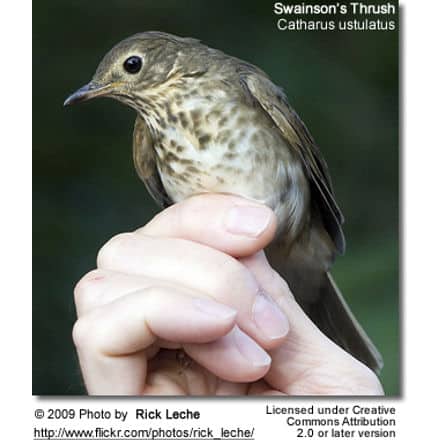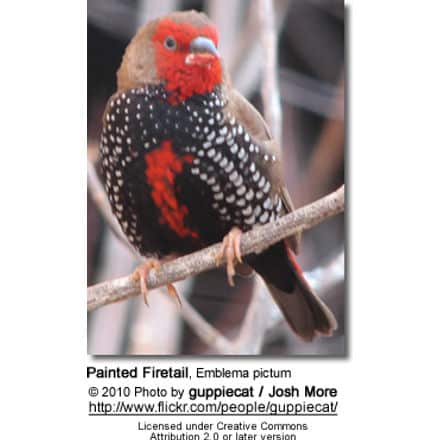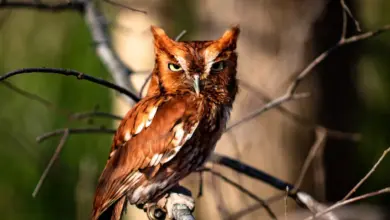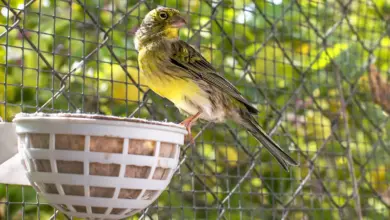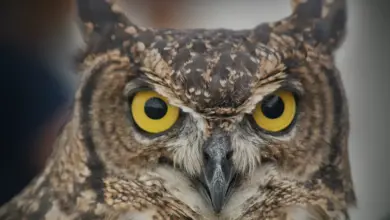Swainson’s Thrushes (Catharus ustulatus)
The Swainson’s Thrushes, Catharus ustulatus, is a medium-sized thrush.
Swainson’s Thrush was named after William Swainson, an English ornithologist.
Four subspecies are recognized:
- Cathartus ustulatus alameC. u. swainsoniC. u. ustulatus andC. u. oedicus.
Description
This species is 16-18 cm in length, and has the white-dark-white underwing pattern characteristic of Catharus thrushes.
Adults are brown on the upperparts. The underparts are white with brown on the flanks; the breast is lighter brown with darker spots. They have pink legs and a light brown eye ring.
Birds in the east are more olive-brown on the upperparts; western birds are more reddish-brown.
Distribution / Range
Their breeding habitat is coniferous woods with dense undergrowth across Canada, Alaska and the northern United States, also deciduous wooded areas on the Pacific coast of North America.
Subspecies Cathartus ustulatus alame and C. u. swainsoni summer east of the British Columbian Coast Mountains, the Cascades and the Sierra Nevada, and C. u. ustulatus and C. u. oedicus summer west of these ranges. There is a small area of overlap in the Coast Mountains.
Recent molecular systematics work by Ruegg and Smith (2002) confirms that these two pairs of subspecies form two genetically distinct clades, referred to as the continental and coastal clades, which diverged during the Late Pleistocene era, probably about 10,000 years ago.
These birds migrate to southern Mexico and as far south as Argentina. The coastal subspecies migrate down the Pacific coast of North America and winter from Mexico to Costa Rica, whereas the continental birds migrate eastwards within North America (a substantial detour) and then travel southwards via Florida to winter from Panama to Bolivia. Swainson’s Thrush is a very rare wanderer to western Europe.
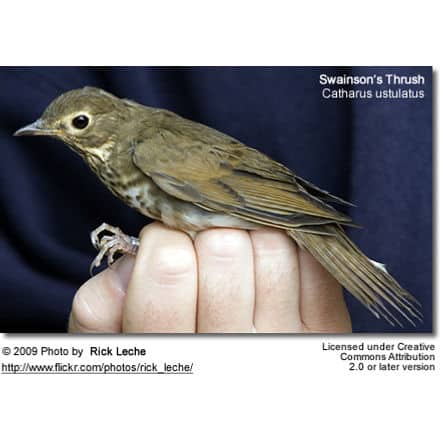
The genetic differences between the subspecies, and the circuitous migratory route of the continental birds, strongly suggest that these species underwent a rapid range expansion following the end of the last ice age, with populations originally summering in the south-east of North America expanding their ranges northwards and westwards as the ice retreated.
Details of the molecular genetic analysis support the hypothesis of rapid expansion of both coastal and continental populations.
The current migratory routes of the continental birds, especially the western populations, are not optimal in ecological terms, and presumably represent an inherited, historical route pattern that has not yet adapted to the birds’ modern population locations.
These results nonwithstanding, analysis of mtDNA cytochrome b and NADH dehydrogenase subunit 2 as well as nuclear β-fibrinogen intron 7 sequence data shows that Swainson’s Thrush is the most ancient North American species of its genus; it is not closely related to other Catharus and the outward similarities with the other North American species are due to convergent evolution (Winker and Pruett, 2006).
They may be displaced by the Hermit Thrush where their ranges overlap.
Nesting / Breeding
They make a cup nest on a horizontal tree branch.
Diet / Feeding
They forage on the forest floor, also in trees. They mainly eat insects, fruits and berries.
Calls / Vocalization
This bird’s song is a hurried series of flute-like tones spiralling upwards.


